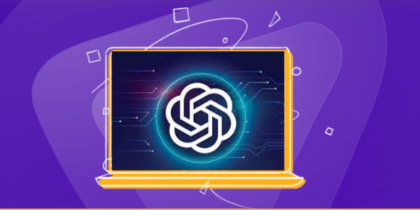MemComputing is actively exploring the utilization of Application Specific Integrated Circuits (ASICs) for in-memory processing, with the potential capability to crack 2048-bit RSA encryption in real-time efficiently.
MemComputing, a company and innovative computational philosophy, originates from a fundamental concept: integrating data and processing within memory to overcome the well-known ‘von Neumann bottleneck.’
“This bottleneck arises from the latency introduced by segregating storage and processing, necessitating constant data communication between the two components.”
In a scholarly paper titled “Scaling up prime factorization with self-organizing gates: A memcomputing approach,” MemComputing researchers acknowledge the formidable challenge of large-scale prime factorization.
The von Neumann bottleneck inherently results in an exponential increase in time-to-solution.
The Technology to Take Over
With current technology employing the most advanced algorithm known as the general number field sieve (GNFS), the task of factoring a 2048-bit RSA key is estimated to take longer than the universe’s age.
“The General Number Field Sieve is an algorithm for factoring very large numbers. Factoring is very important in the field of cryptography, specifically in the RSA cryptosystem.”
Although uncertain in terms of arrival, quantum computers promise to resolve this problem within a meaningful timeframe.
Consequently, the National Institute of Standards and Technology (NIST) has initiated efforts to develop more intricate post-quantum encryption algorithms to ensure continued data protection.
Motivated by the prospect of surpassing the timeframe for quantum computer development, MemComputing studied, supported by a Small Business Innovation Research (SBIR) contract with the US Air Force.
They conducted software emulation, focusing on test problems ranging from 30 to 150 bits.
“In simpler terms, the time needed for in-memory computing to factor large numbers increases much slower than that experienced by classical computers.”
What’s Next in Line?
The goal is to implement this capability in an Application Specific Integrated Circuit (ASIC), which is a specialized chip.
While ASICs involve longer and more costly development compared to general-purpose computer chips, they remain more feasible than waiting for the rise of quantum computers.
The researchers suggest the possibility of solving a 2048-bit factorization problem within a matter of minutes using an ASIC based on the MEMCPU Platform, as indicated by their estimations derived from the circuit emulator.
If this concept materializes successfully, the envisioned ‘cryptopocalypse’ – the doom of current encryption methods – may materialize earlier than anticipated, driven by in-memory computing ASICs rather than quantum computing.
Quantum Computing and Cyber Security
Quantum computers currently reside within the limits of research universities, government institutions, and prominent scientific enterprises, mainly beyond the reach of malicious actors.
Ongoing advancements in quantum computing technology have raised legitimate concerns about the potential to breach modern cryptography, rendering current data encryption methods obsolete.
In May 2022, President Biden issued a national security memorandum outlining government efforts to preempt quantum computing security risks.
The National Institute of Standards and Technology (NIST) has been actively developing post-quantum cryptography standards.
It’s essential to note that the security landscape is not without vulnerabilities, as the CRYSTALS-Kyber encryption recommended by NIST was compromised using AI and side-channel attacks.
Think Forward!
While commercial quantum computing may still be years away, forward-thinking security strategies are imperative.
This includes network segmentation, utilization of 5G private networks, and the implementation of zero-trust architectures for data in transit.
Organizations may need to reconsider their storage practices and encryption strategies for data at rest, especially as we prepare for the inevitable quantum era in computing.
Staying vigilant and adopting a defense-in-depth approach remains essential!








